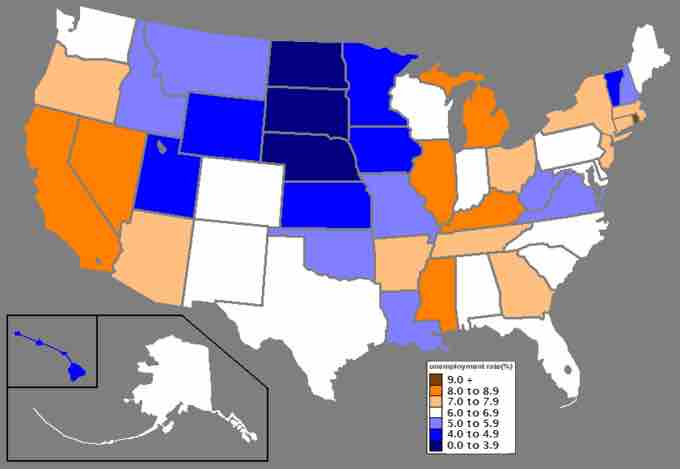Full Employment
In macroeconomics, full employment is the level of employment rates where there is no cyclical or deficient-demand unemployment. Mainstream economists define full employment as an acceptable level of unemployment somewhere above 0%. Full employment represents a range of possible unemployment rates based on the country, time period, and political biases .

U.S. Unemployment
The graph shows the unemployment rates in the United States. Full employment is defined as "ideal" unemployment. It is important because it keeps inflation under control.
Ideal Unemployment
Full employment is often seen as an "ideal" unemployment rate. Ideal unemployment excludes types of unemployment where labor-market inefficiency is reflected. Only some frictional and voluntary unemployment exists, where workers are temporarily searching for new jobs. This classifies the unemployed individuals as being without a job voluntarily. Ideal unemployment promotes the efficiency of the economy.
Lord William Beveridge defined "full employment" as the situation where the number of unemployed workers equaled the number of job vacancies available. He preferred that the economy be kept above the full employment level to allow for maximum economic production.
Non-Accelerating Inflation Rate of Unemployment (NAIRU)
The full employment unemployment rate is also referred to as "natural" unemployment. In an effort to avoid this normative connotation, James Tobin introduced the term "Non-Accelerating Inflation Rate of Unemployment" also known as the NAIRU. It corresponds to the level of unemployment when real GDP equals potential output. The NAIRU has been called the "inflation threshold. " The NAIRU states the inflation does not rise or fall when unemployment equals the natural rate.
As an example, the United States is committed to full employment. The "Full Employment Act" was passed in 1946 and revised in 1978. It states that full employment in the United States is no more than 3% unemployment for persons 20 and older, and 4% for persons aged 16 and over.